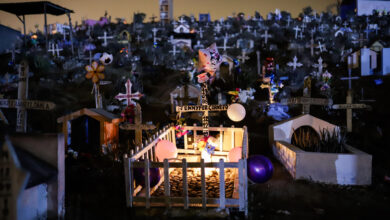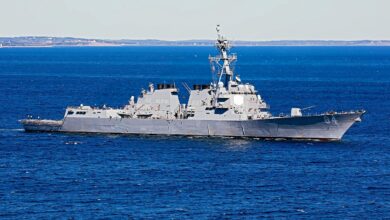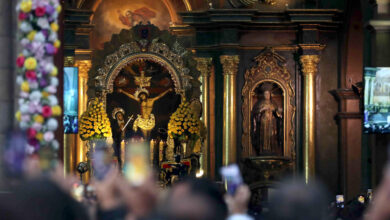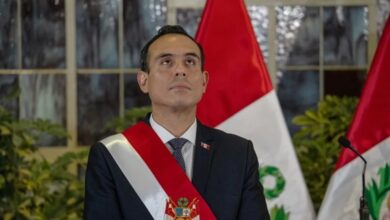Peru: the Conflict Between Dina Boluarte and Pedro Castillo Reaches International Levels
After three months of protests over Pedro Castillo's removal from Peru's presidency, several Latin American political actors have begun to launch opinions on the legitimacy of Dina Boluarte.

Photos: Ministry of Production, Presidency of the Republic of Peru
LatinAmerican Post | David García Pedraza
Listen to this article
Leer en español: Perú: el conflicto entre Dina Boluarte y Pedro Castillo alcanza niveles internacionales
Peru has been the largest epicenter of anti-government demonstrations in the Americas since the end of 2022, although in its neighbors, Brazil and Colombia, the social situation is critical. From Lima, the protests go further. The political and governance crisis in which the Inca nation finds itself has reached such a point where several Latin American leaders have addressed some Peruvian political figures with reasonably strong and not very diplomatic terms.
Peru's presidential instability has not only severely affected the national economy, to the point of registering 0% GDP growth in the first month of 2023, according to Scotiabank's Department of Economic Studies. Also, the foreign perception of the lack of Executive strength and the short approval of the Peruvians of the legislature and of president Dina Boluarte who has been the country's president since December 7, 2022.
Peruvians are Not the Only Ones Upset with their Politicians
With 77% disapproval of public opinion towards Boluarte and 90% towards the legislature, according to a survey by the Institute of Peruvian Studies and the newspaper La República of Peru, the Peruvian political crisis is latently felt in the streets of the country. In Lima, the disorders have come to affect tourism in the capital and the main attraction of Peru: Machu Picchu.
In addition to the problems that tourists must face hoping to leave Peru as soon as possible, the discomfort of the Boluarte headquarters and the actions of Peruvian parliamentarians have also been shown from abroad. The comments of the heads of state of Chile, Colombia, and Mexico are the ones that resonate the most, thus creating a disagreement in regional diplomacy.
Gabriel Boric, when expressing his concern about the actions of the police against the Peruvian demonstrators, Manuel López Obrador, when saying about Boluarte that he was a puppet at the service of the oligarchy. Even Gustavo Petro declared persona non grata in the Inca nation by insinuating that the imbecile was Luis González Posada, former Peruvian foreign minister, when treating López Obrador with the same term. This has produced a diplomatic fight in Latin America, so much so that The Peruvian Nobel Prize for Literature, Mario Vargas Llosa, lamented how the leaders of these three countries are directed towards Peruvian politics, in addition to questioning the positions of the governments of Argentina, Bolivia, and Honduras regarding the Peruvian crisis.
Is Peru Approaching an Isolation Like that of Venezuela in 2019?
Restricting economic incentives (such as foreign investment and free trade agreements) and breaking diplomatic relations between nations are mechanisms used to isolate a country whose government is considered a threat to its own population. To list some cases, the UN, the OAS, or groups of various countries have used these strategies to pressure governments such as Iran, Russia, Afghan, Nicaragua, and the best known in Latin America: The Nicolás Maduro regime in Venezuela.
In 2019, the idea of the then president of Colombia, Iván Duque, of creating a diplomatic fence to confront the Maduro government at the regional level, based on the Lima Group signed in 2017 by 14 countries that sought to support the opposition Venezuelan for a peaceful solution to the conflict, did not achieve its goal. Despite the support of the United States with economic sanctions towards Maduro, his relatives, and state companies, this diplomatic siege only served to intensify the help of the leftist leaders of the region to such an extent that Peru, Mexico, and Argentina, to name a few, some were giving up on this idea by classifying it as inefficient.
The diplomatic siege ended with the departure of Duque and the entry of Petro. When this idea was left without a politician to lead it, the Venezuelan government continued its course normally, regardless of the international pressure it had for three years. This showed that the regional union, from 2021 onwards, with a left-wing majority, did not achieve the goal of the right-wing majority that existed in 2017. Given this balance, the same could happen to the Boluarte government, given the situation in 2023.
It may interest you: Crisis in Peru: Dina Boluarte more similar to Duque and Piñera than Castillo
With the rejection by the governments of Argentina, Chile, Mexico, and Colombia of Peruvian governance and the actions of its legislators and public forces, little by little, a kind of ideological fence is being created to get more political actors to unite with to start taking actions that allow the end of the Peruvian conflict. What is interesting in this panorama will be how they achieve it since the right has been characterized as solid and imminent in these cases. However, as the left rules, spoken negotiation may be one path to take.
Lima: the Caracas of the Right
Regardless of whether Dina Boluarte represents a party of the left, or extreme left, the Peruvian Congress has excellent power in the way it is governed, and this, being from the right, is exposed to being the direct opposition of former president Pedro Castillo, whose arrest was the trigger for the Peruvian crisis.
Both the right and the left in Peru have very high disapproval, and this scenario is reminiscent of Venezuelan politics in 2017. For this reason, the similarity between the governments of Caracas and Lima indicates what could happen very soon to the foreign relations of Peru.
However, the better balance of powers in the Peruvian case could be a thorn in the shoe for the left-wing Latin American union, which would urge the government and citizens to arrange dialogue tables to end the collective hysteria and think of practical solutions.
It remains to observe the position that Brazil comes to take and the possibility that AMLO needs to hand over the presidency of the Pacific Alliance to Peru.





